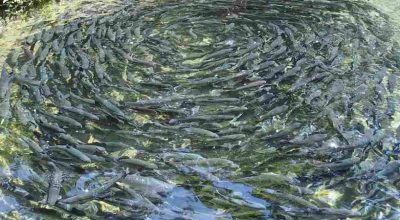
Narayan Ghimire
Kathmandu, Oct 25: With Tihar, the second biggest festival of Nepali Hindu, round the corner, news on flowers and garlands are reported from across the country. A news story disseminated three days back must have come as a huge relief to many. The news was: ‘Local levels ban plastic flowers in Banke and Kailali’. The news story elaborated that Kohalpur municipality of Banke district and Tikapur municipality of Kailali district banned the use of plastic made flowers and garlands in the wake of approaching Tihar, a festival of colour, light and flowers.
Kohalpur municipality issued a notice on the prohibition of distribution and sales of plastic flowers and garlands in the upcoming festivals, Tihar and Chhath, at the local level.
An official was quoted as saying, “The artificial flowers made of plastic cause adverse effect on human health and pollute environment.” Another reason he had was- the flood of artificial flowers could hamper the business of local florists. A local level in the neighbouring district, Kailali followed suit with the similar argument. Another important line in the news is: “We incurred a huge loss last year. The garlands readied for sale did not get prices. But, this year, the local government came up with a welcome decision, which must be enforced effectively.” It was what the plight of a florist Chhatra Malla.
In the similar vein, Kathmandu metropolitan city issued ‘an important notice’ prohibiting the use, sale, supply, distribution, and storage of plastic flowers, bouquets and garlands. The notice issued by the department of environment management at KMC reminded the law and warned of action if the diktat was violated.
These are some references that certainly deserve appreciation and encouragement. There is no denying that the domestic production of flowers needs promotion with proper market and favourable policy and laws in the country. As the festival time peaks, market intrusion by the superficial flowers must be curbed in collaboration.
While the local levels are warning people not to use the plastic flowers, garlands and bouquets during Tihar and Chhath festivals that witness a huge demand of flowers every year, whether the related department and ministries at provincial and federal levels come up with such notices is yet to be observed.
Flowers are essential paraphernalia for festivals, religious events, fairs and rituals. Varieties of flowers grown in Nepal have religious and medicinal values as well. From a single petal to bouquet and trappings, flowers are used for worshipping and decoration.
During the Tihar festival, marigold (sayapatri), makhamali and godavari are used most for garland. But, it is worrying to see the artificial flowers flooding market on the run up to festival. The notices warning people to avoid using cosmetic flowers have therefore come to elate the florists, consumers and environmentalists alike.
Florists welcome ban
However, whether Nepal is self-sufficient in production and supply of flowers also draws attention. President of the Floriculture Association Nepal (FAN), Dilip Bade, shared with this scribe that Nepal was about to become self-sufficient in flowers for Tihar this time, but the recent floods and landslides caused huge damage, incurring 35 percent decline in the flower production. “In a normal state, we’re able to produce flowers to cater 90 percent of total demand.”
“Nepal is making a transaction of flowers for about Rs 430 million this year. Among three flowers consumed in Tihar, marigold tops the production and demand. Nearly 4 million garlands of marigold flower are sold during Tihar,” he said, adding that governments’ decisions to ban plastic made flowers in a welcome move.
Bade further said they had advocated for the plastic free garlands, to which the government paid heed since last year. “We cooperate with governments at different layers to curb the supply and sale of plastic made garlands.”
Nepal also exports makhamali and godawari flowers for Tihar. However, the disaster has hit the floriculture this year, forcing the country to import at least 1.5 million garlands this time, according to him.
Bade sees a thriving atmosphere for floriculture in Nepal and demands cooperation from all sides.
Obsession to plastic
Largely for convenience, we are so addicted to the use of plastic materials that even the garlands, bouquets and trappings are made of plastic and sold in a large amount. Although plastic flowers can be bought at cheaper prices than natural flowers, the superficial items have a huge cost to environment.
At a time when the plastic pollution has surged uncontrollably, the local level’s notices must serve as a wakeup call for the central government to take similar measures with effective monitoring. It may sound ordinary but strict enforcement of these notices bears tremendous value- commercial, entrepreneurial and environmental. Those involved in floriculture and associated entrepreneurship make a huge income once the governments address their demands. It further contributes to the rural economy.
Similarly, the governments at all levels must pay heed to the market management for flowers. As these decorative plants, especially marigolds, wilt and decay in a short time, the florists need assistance and facilitation to preserve freshness.
In order to make Nepal self-sufficient in flowers, availability of flower seeds and plants, compost, insecticides, training to farmers, and grants for commercial plantation are equally important. The country’s richness in diverse climate zones and geography is a boon for us to grow varieties of flowers like other plants. Isn’t it a high time we broke the barriers to expand the value of flowers beyond the paraphernalia to ceremonies and decoration, thereby making it a source of income and importantly the contribution to clean and green environment?
















